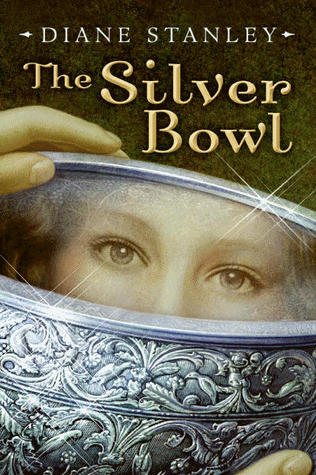 Confession: I have a major soft spot for the hordes of fictional women and girls who begin with Disadvantages but, through their own grit and spunk, manage to Make Good, Get Ahead, and Be Happy (see, e.g. Anne Shirley, Hermione Granger, Francie Nolan, Lyra Belacqua…the list could go on).
Confession: I have a major soft spot for the hordes of fictional women and girls who begin with Disadvantages but, through their own grit and spunk, manage to Make Good, Get Ahead, and Be Happy (see, e.g. Anne Shirley, Hermione Granger, Francie Nolan, Lyra Belacqua…the list could go on).
Sometimes these women and girls pull through on their own, and sometimes they are helped along by fairy godparents, handsome princes, or magical beasts. In The Silver Bowl, Molly is helped – and hindered – by all three, and without the gifts of her own fearless stubbornness and a very true friend, she would never have made it to the end of the book. Because she would be dead. But of course, she lives and succeeds, because The Silver Bowl is a fairy tale.
Unlike Bella at Midnight, The Silver Bowl doesn’t re-tell any particular fairy tale – but it still has all of the essential ingredients for one: poor girl becomes a scullery maid in the palace where she makes fast friends with the donkey-boy; after several years, with some help from her Second Sight, she and the donkey-boy save the life of the Crown Prince, prevent a civil war, and are raised to the status of nobility. Much cheering and clapping ensues and Happily Ever After seems, if not immediate, at least imminent.
And that, my friends, is that.
The joy of the book lies, however, in the details. Molly spends her childhood running wild in the streets, mostly ignored by her drunken father and “mad” mother. Her primary concerns are hunger and a dry place to sleep. Essentially sold off to the palace by her father, she meets Tobias, who has been working in the palace for (it seems) several years. He advises her on how to scrub pots without cracking open your hands so that they bleed, and how to act like a servant so that she can keep her job instead of starving in the street. She teaches him how to wipe the snot from his nose so that his face is less disgusting and how to breathe with his mouth only slightly open, so that he doesn’t look like a dope. People live under harsh conditions. People die. People are bled and poulticed. It’s (quasi) medieval life – it’s not pretty. But it’s compelling – at least, it is when Diane Stanley writes about it. So compelling that I immediately (okay, maybe it was the next day) went back to the library to borrow the remaining two books in the series, which I then devoured (at the rate of one per evening).
I love LOVE LOVE the development of the relationship between Molly (our heroine) and Tobias (the donkey-boy). (Spoiler: it’s not romantic…quite).
I got chills from the description of the silver bowl and its beauty and strangeness.
I haven’t yet read a Diane Stanley book that I dislike. She has a great imagination and knows how to tell a story.
So, having said all those things, here are my critiques:
- The Silver Bowl is told in the first person, which I usually find off-putting. Even stranger, however, is that this is the only book in the series that is told in the first person. I didn’t even notice this at first, because I was so caught up in finding out what happens next. But once I did notice, it was a bit weird.
- There is a fight scene between Molly and, well, supernatural beings. I was unconvincing. It was jilted. I just wasn’t drawn in and didn’t believe in the urgency of the fight.
- Prince Alaric faces down his cousin in a War of Words. It is one of the key scenes in the book. It should have been filled with tension. But it was so stilted and off, that I wasn’t tense.
Conclusion – would I recommend this book? YES! There are beautiful scenes in it that made me laugh and hurt. But there are also scenes and choices made by the author that are off-putting. I wouldn’t (yet) class Ms. Stanley in the pantheon of unforgettable spot-on Authors of Lasting Classics…but even Montgomery wrote sentimental crap at times (collective gasp! but I tell you, it’s true) so it could still happen.
Reading Ages: 8-12, possibly 13. It would be an easy read for a 13-year-old (it’s about at the level of the Narnia series) but hey, I’m much older than a teen, and I enjoyed the story.
Rating: B+. Very well written, with only a few bumps. Real people, and a fast-moving story.